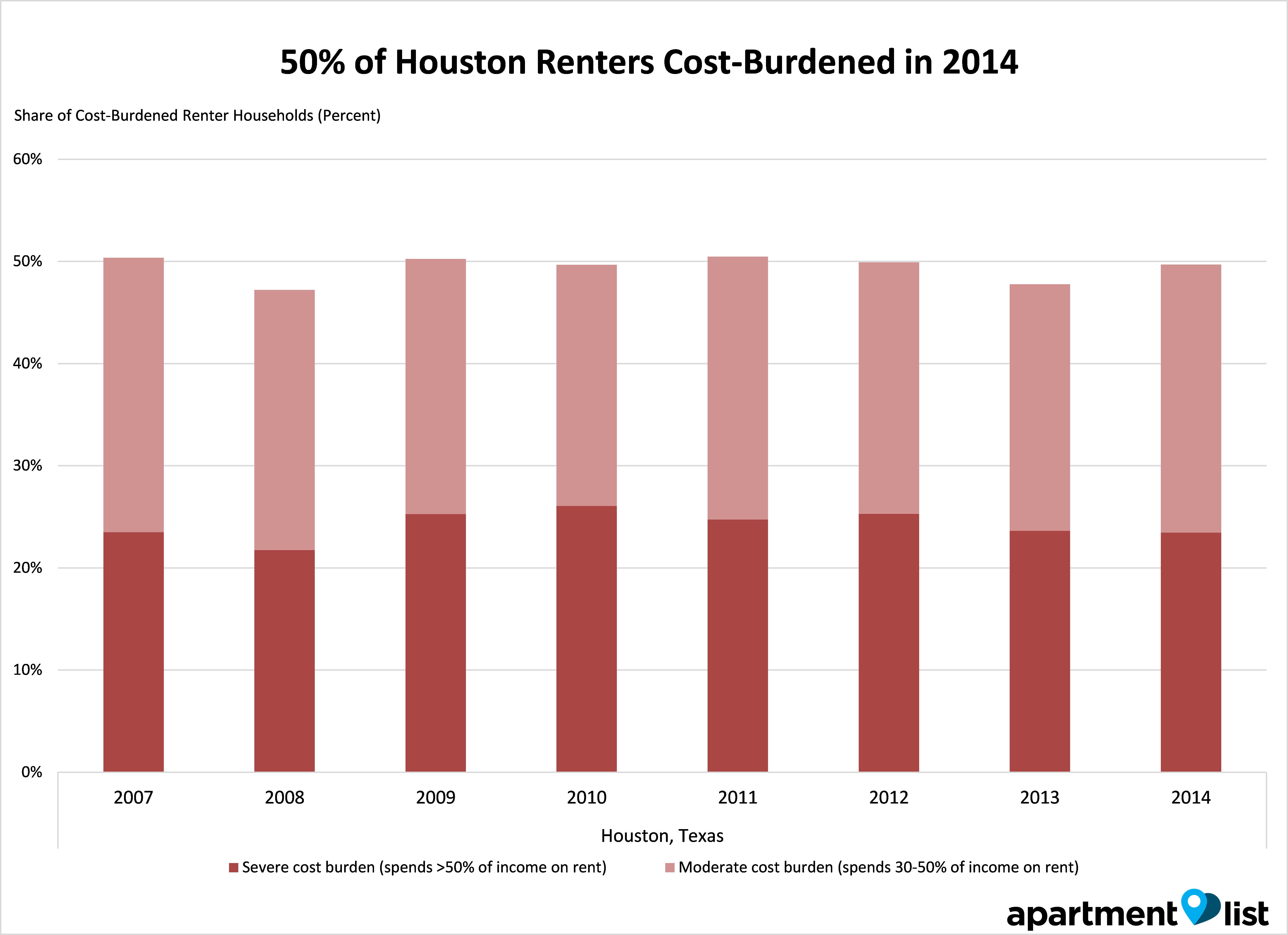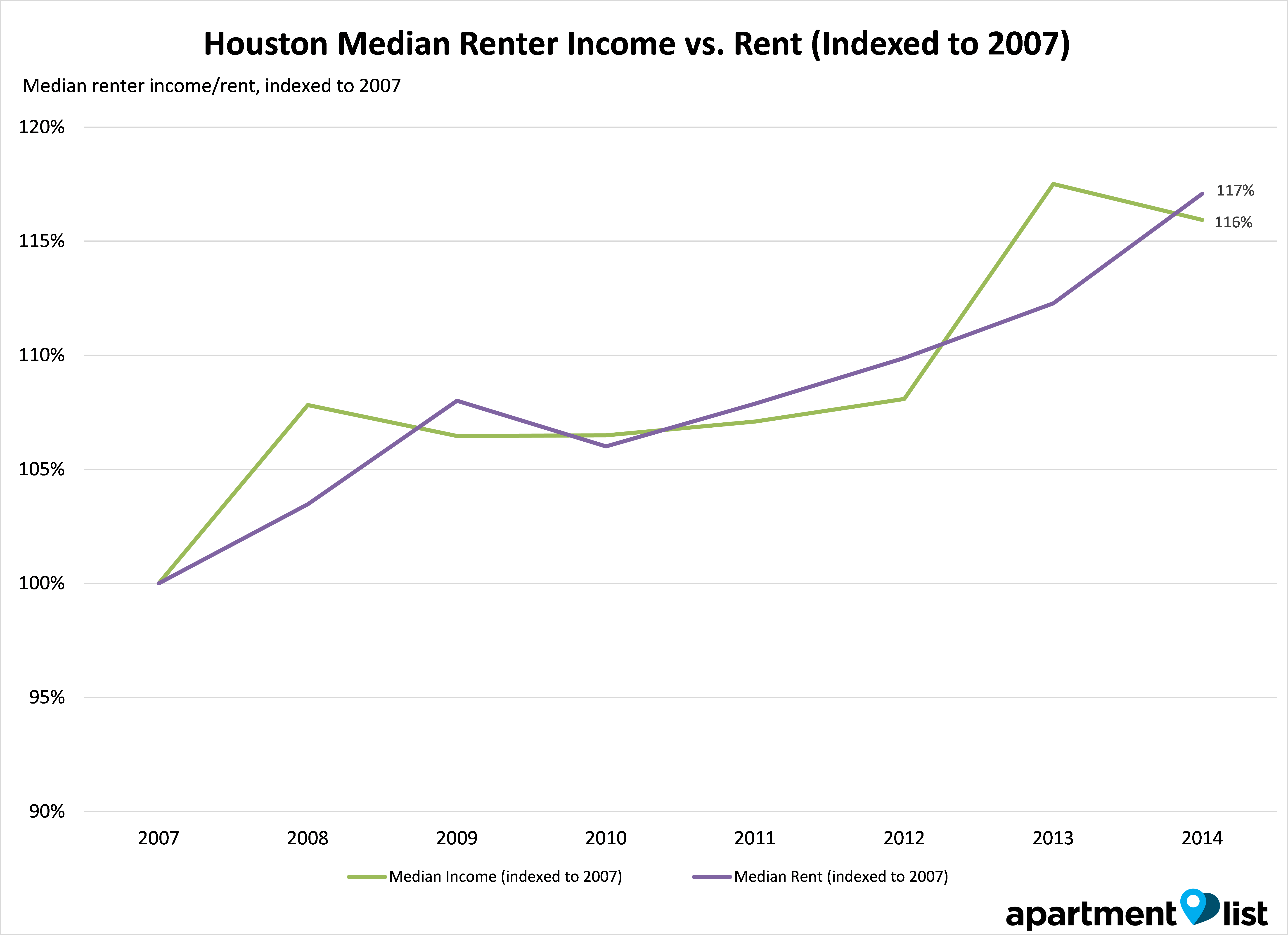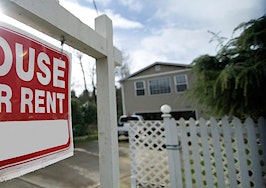With the U.S. homeownership rate at its lowest since 1967, the U.S. renter population is the largest it has ever been, and now stands at 43 million households. With rents increasing much faster than incomes, however, renters in cities across the U.S. increasingly struggle with housing affordability. Apartment List recently analyzed Census data from 2007-2014 to understand which cities and states have the most cost-burdened renters (spending more than 30 percent of their income in rent).
Cost-burdened renters in Houston, 2007-2014

As seen from the chart above, the share of cost-burdened renters in Houston was 50 percent in 2007. Cost-burden rates have stayed fairly stable from 2007 to 2014; they are lower than the national (52 percent) and slightly higher than the state (49 percent) average.
Median rents and renter incomes in Houston, 2007-2014

Diving deeper into the data, we see that Houston rents have increased significantly from 2007-2014. Driven by the booming energy sector, median renter incomes have mostly kept pace, however, increasing by 16 percent during that same period. Now that oil prices have fallen, we expect income and rent growth to flatten in 2015.
Andrew has lived in 13 different apartments in the past six years. He currently is a Manager of Growth Strategy at Apartment List, leading research on rental market trends and renter satisfaction. His interests include cycling, cooking and tennis.








